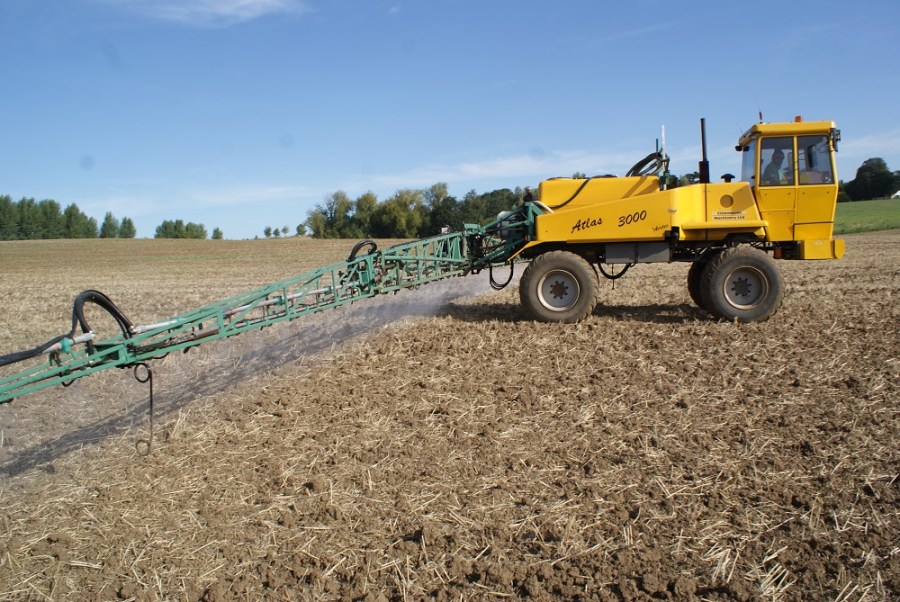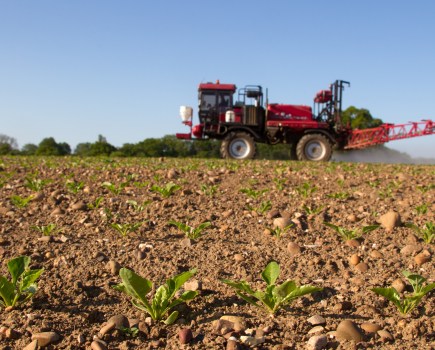More care and less speed in stubble glyphosate spraying are critical to making the most of its increasingly vital role in arable grass weed control this autumn, insist leading crop management experts.
“With time at such a premium and effective control of black-grass and other troublesome weeds ahead of drilling so crucial, less-than-ideal pre-planting glyphosate treatment is something you can’t afford these days,” stressed Roundup technical specialist, Barrie Hunt. “Quite apart from wasting time and money and putting extra pressure on hard-pressed pre-and post-em chemistry, an incomplete kill is the fastest route to resistance development.”
“You’ve only got one or two shots to tackle black-grass ahead of drilling,” pointed out Agrii regional technical adviser and spraying specialist, David Felce. “And, if you’ve got bad black-grass these can be your most important sprays of the season. So it makes sense to take the time and effort to get your glyphosate application spot on.”
Correct glyphosate targeting is as important as timing in David’s opinion. For which he is adamant that operators need to spray at the right speed, height and pressure with the most appropriate nozzles as well as using the correct rates and water volumes.
“When workloads are stretched, as they tend to be in the autumn, it’s tempting to crack-on with stubble spraying at 14-16 km/hour with the boom set high enough to ensure good ground clearance and coarse or air induction nozzles to minimise drift risk,” he said.
“In my experience, water volumes as low as 100 litres/ha are fine. They allow you to cover more hectares in a day and get higher concentrations of glyphosate onto the leaf.
“In view of its translocated action, in line with traditional glyphosate guidance, I would normally recommend a relatively coarse spray in the interests of drift reduction. But with small, thin seedling black-grass leaves, the spray shouldn’t be too coarse as this limits droplet numbers, reducing coverage and your chances of hitting all the targets.”
For this reason too David Felce strongly advises against using air induction nozzles. Instead, he sees 03 flat fan (FF) nozzles operated at 2.5 bar as the best all-round option.
For the most effective seedling weed targeting and least drift risk he advocates a boom height of around 50 cm and forward speed of 12 km/hour to minimise turbulence effects. Where it’s difficult getting the boom down to this level, he suggests replacing the standard FF110 with an 80o nozzle to ensure the right spray quality.
“The short autumn window between harvesting and drilling on many units makes it vital to guard against conditions that can compromise glyphosate uptake and activity,” observed Barrie Hunt. “In particular, hot and dry weather, rainfall within a few hours of spraying, and hard water.
“This makes it important to use modern Roundup formulations proven to give better control of difficult weeds under challenging conditions rather than merely increasing rates or adding adjuvants. The fact that they are significantly less prone to drift through flat fan nozzles than standard generic formulations and have a cultivation interval of just six hours on annual grass weeds makes them particularly valuable in this respect.”
“It’s equally important to use the right rate of glyphosate for the job,” he insisted. “You typically need 540 g/ha of glyphosate to control grass weed seedlings of up to six tillers and up to 1800 g/ha for the most difficult perennials. In most situations, adjuvants will not make up for any lack of active ingredient.”
Where drilling has to be delayed for more than a few days after stubble spraying, Barrie Hunt sees the approval of modern Roundups for post-planting, pre-emergence application and their broad tank-mixing compatibility as giving valuable extra flexibility to autumn glyphosate treatment, ensuring pre-ems don’t have to control emerged weeds.




